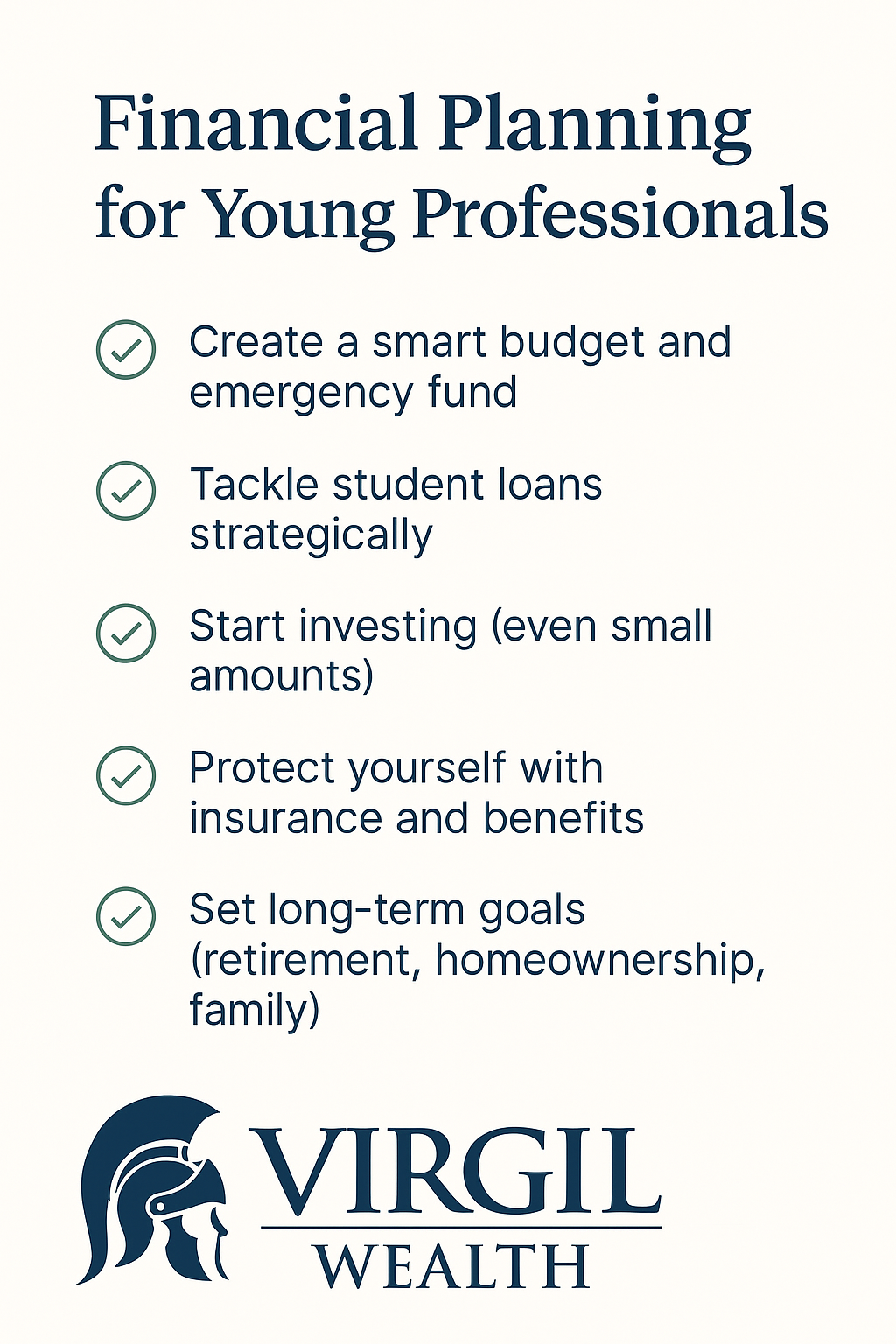Why Financial Planning Matters Early in Your Career
Compounding is sometimes referred to as the eighth wonder of the world, but the only way it works is if you give it time and start early. Here are 5 steps we recommend to maximize your cash flow early on and start off on the right foot.
Step 1: Create a realistic budget and save for an emergency fund
Look closely at monthly bills and spending to create a budget that fits your lifestyle and allows for significant savings. Virgil Wealth has internal tools that can track your credit card spending, classify the appropriate categories, and help you stay the course. Once your budget is set, start building an emergency fund that can cover 4-6 months of spending.
Step 2: Tackle Student Loans and Other Debt Efficiently
Most people have some form of debt, either student loans, credit card debt, or other. We recommend prioritizing paying this off ASAP in order to free up future cash flow. One popular method is the Debt Snowball method.
Step 3: Start Investing
No matter how much you have to invest, it is important to start building the muscle by investing every month. We recommend investing in tax-advantaged accounts as much as possible (HSA, 401(k)s, IRAs) and then into taxable brokerage accounts as savings allow.
Step 4: Protect Yourself with Insurance and Benefits
If you have employer-sponsored benefits, ensure you are optimizing your choices for your situation. Weigh the pros and cons of high-deductible health plans (HDHP) vs. PPOs, and think about whether long-term care or disability insurance makes sense. Consider getting supplemental life insurance outside of your plan as well to make sure family and loved ones are taken care of in the future.
Step 5: Set Long-term Goals
Figure out what is important for you and put goals in place. Whether you want to save for a house, a family, your retirement, or something else, it is important to set goals that can be monitored and tracked over time.
Ready to build your financial plan with confidence? Book a free 15-minute consultation below.
5 Step Financial Planning Checklist for Young Professionals

